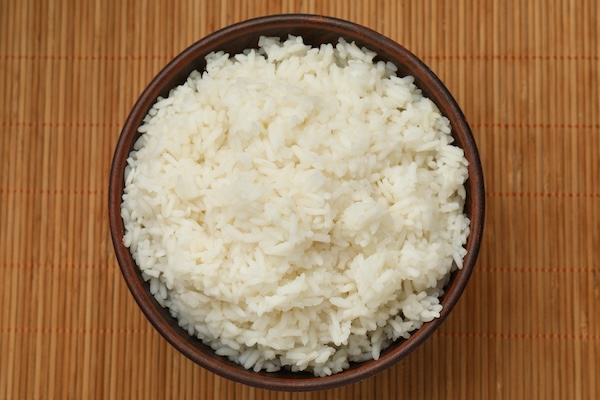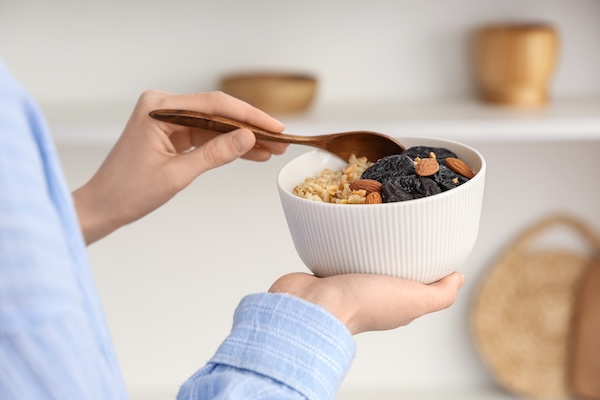
Prediabetic? Watching your blood sugar? There are rumors that cooling rice and then reheating it lowers the glycemic index. Is this a key to making rice safer to eat? The science on this is mixed. Many of these studies are small, so the data is not conclusive. Regardless, if you’ve been following Biohackr Health, you know what I am going to say next: the most important thing is for you to see how rice affects YOU.
YES. COOLING RICE DOES HELP THE GLYCEMIC INDEX:
The thought here is that cooked starch causes “starch retrogradation,” which increases resistant starch content. So if you cool rice, it will change the glycemic index. There seems to be data to support this, but for rice that is cooled for 24 hours in a refrigerator, not at room temperature or for a few hours.
- Published 2015 randomized controlled trial, “Effect of cooling of cooked white rice on resistant starch content and glycemic response.” Asian Pacific Journal of Clinical Nutrition.
- This study looked at freshly cooked rice (the control), cooked rice cooled for 10 hours at room temp, and rice cooled for 24 hours in the refrigerator. Findings showed resistant starch contents increased with cooling.
- They then took the refrigerated cooled rice in 15 healthy adults and looked at glycemic response. This was randomized, blinded study. The test rice had significantly lowered glycemic response compared to control.
- Another study, “Analysing the Impact of Resistant Starch Formation in Basmati Rice Products: Exploring Associations with Blood Glucose and Lipid Profiles across Various Cooking and Storage Conditions In Vivo,” Foods May 2024. This study out of India looked at different ways of preparing basmati rice and then looked at the effect of resistant starch on blood glucose and lipids in humans and rats.
- They tried four methods of making the rice: boiling, boiling in extra water, frying, and pressure cooker.
- They then stored it after cooking at different temperatures and times: fresh, room temp for 24 hours, refrigerated for 24 hours, and refrigerated and then reheated.
- Looked at dietary fiber, resistant starch, and starch digestion rates
- FINDINGS: The rice that was refrigerated for a day had a lower glycemic index and was higher in resistant starch. When comparing the 4 methods, the blood glucose, cholesterol, triglycerides, and LDL were reduced in the refrigerated rice.
NO. It doesn’t.
-
A comparative study was published in 2013 in the Asia Pacific Journal of Clinical Nutrition, “Effect of variety and cooking method on resistant starch content of white rice and subsequent postprandial glucose response and appetite in humans.” This study was building on the idea or resistant starch from a prior Indian paper looking at the four white rice varieties (jasmine, short grain, medium grain, long grain) and methods of preparing (oven baked, rice cooker, pressure cooker) and then whether cooled or not.
- They looked at the rice with the highest resistant starch (long grain, rice cooker, refrigerated) and lowest resistant starch (short grain, pressure cooker, refrigerated) content for this trial to look at the glycemic response and appetite to eating
- 21 adults
- Rice was reheated
- Glucose area under the curve was significantly lower for both rice groups than the control glucose beverage BUT the glycemic indexes didn’t differ between the highly resistant starch and low resistant starch.
- FINDING: the resistant starch in rice had minimal impact on the glycemic response and appetite.
- Another study, a randomized controlled trial in the American Journal of Clinical Nutrition, Nov 2021, “Neither low salivary amylase activity, cooling cooked white rice, nor single nucleotide polymorphisms in starch digesting enzymes reduce glycemic index or starch digestibility: a randomized crossover trial in healthy adults.”
- This study looked at 50 test subjects with varying levels of salivary amylase who ate a meal with 25 grams or 50 grams of carbohydrate. The carbohydrate was one of five options: dextrose, freshly cooked rice, cooked rice cooled overnight, stir fried hot rice, stir fried cold rice.
- Blood glucose was measured: fasting, 2 hour intervals
- Breath hydrogen at fasting and hourly for 6 hours to see starch digestibility
- FINDINGS: temperature or stir frying did NOT significantly affect digestibility or glycemic index. Common genetic variations in digestive enzymes also had no effect on glycemic index or starch digestibility.
So what do we at Biohackr Health think?
- GET A CGM and SEE YOUR PATTERN. If you are having blood sugar control issues, see what rice does to YOU. It is fascinating to be your own scientist on your body. Keep a journal. Cold? Hot? Reheated after being in the fridge? One patient found store-bought sushi gave her a quick big spike, but sushi from their favorite restaurant (with more protein? avocado?) did not spike as much. There were clear associations of amount of rice, and what was eaten with it. But rice always raised her glucose in a way that a tortilla and pasta did not. (Who would have thought pasta is better for you? It is for this patient.)

